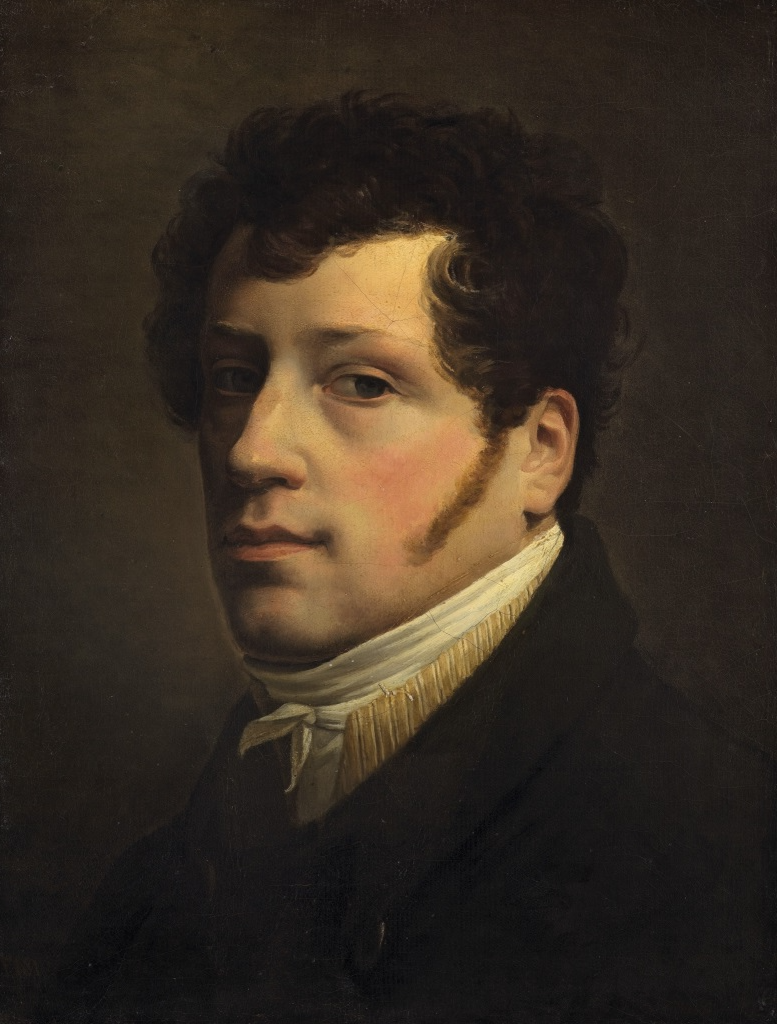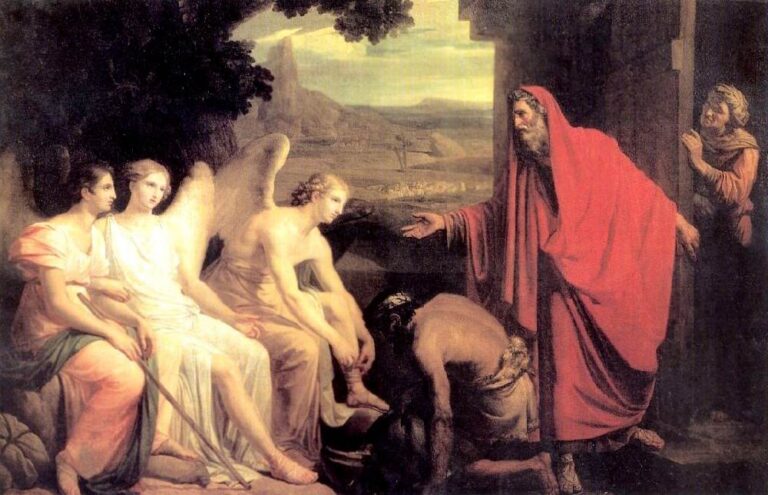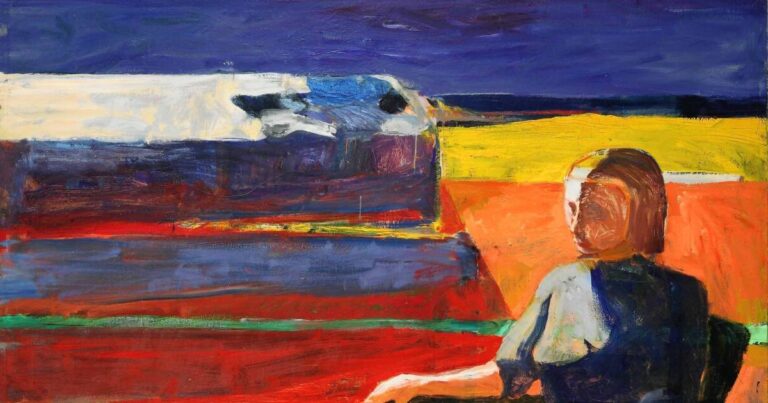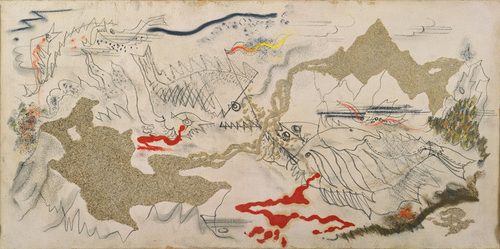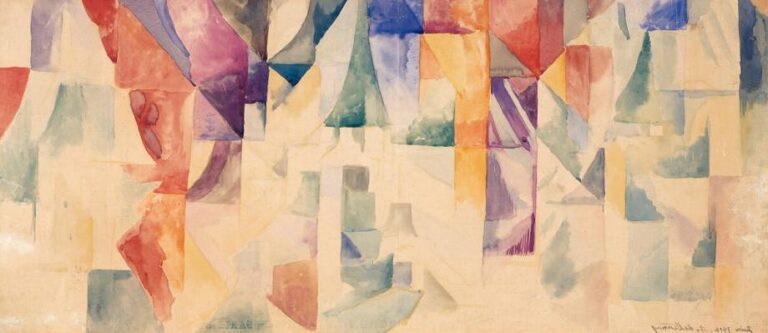Sylvester Shchedrin: Painter of Russian Landscapes in Italy During 19th Century
Born: February 2, 1791, in St. Petersburg, Russia
Death: October 27, 1830, Sorrento, Kingdom of the Two Sicilies
Art Movement: Russian Romantic
Nationality: Russian
Influenced by: 17th-century Dutch and Italian masters
Institutions: Imperial Academy of Arts in St. Petersburg
Sylvester Shchedrin: Painter of Russian Landscapes in Italy
Life and Artistic Journey
Sylvester Shchedrin had an exceptional life and career spanning both Russia and Italy as a landscape painter, beginning his artistic journey in St Petersburg before taking full advantage of the Italian countryside to showcase his craft.
Early Life and Education in Russia
Sylvester Shchedrin was born February 2nd, 1791, in St Petersburg, Russia, to Feodosiy Shchedrin, who was an accomplished sculptor and Rector at the Imperial Academy of Arts. As such, Sylvester had an artistic upbringing.
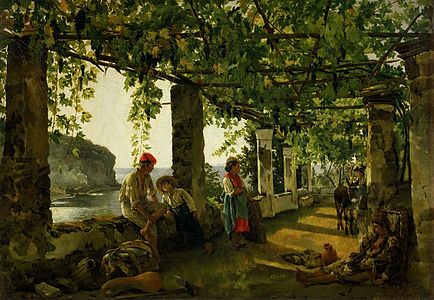
Terrace on the Seashore
Shchedrin’s uncle, Semion Shchedrin, was an accomplished landscape painter – providing an artistic environment for young Sylvester from a very early age. This experience had a tremendous influence on him.
In 1800, Shchedrin entered the Imperial Academy of Arts in St Petersburg at age nine to study landscape painting; here, he demonstrated extraordinary talent.
Transition to Italian Landscapes
Shchedrin graduated from the Academy in 1811. Having won a scholarship to study abroad but delayed by the War of 1812 – his trip was postponed until 1818.
Shchedrin arrived in Rome, Italy, in 1818. The Italian landscapes immediately captivated him, especially its coastal regions.
Shchedrin’s style underwent a significant transition while in Italy. He moved away from formal academic painting towards more naturalistic landscape paintings.
Notable Works and Legacy
Shchedrin is known for his Italian landscape paintings. He painted many scenes from Naples, Sorrento, and Capri.
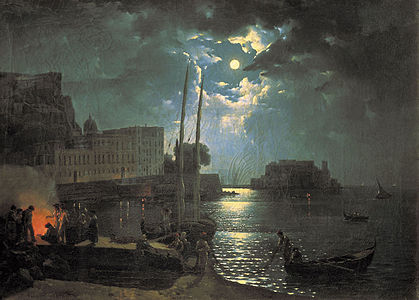
Moonlit Night in Naples
Some of his most famous works include:
- “New Rome. Castle Sant’Angelo” (1823)
- “View of Sorrento” (1826)
- “Moonlit Night in Naples” (1828)
Shchedrin captured the beauty and light of Italian nature in his paintings. He added romanticism to his realistic style.
His work made a significant impact on Russian Art. Shchedrin brought new ideas for landscape painting to Russia.
Today, many of Shchedrin’s paintings can be found in the major Russian museums. His work is admired for the beauty and skill of his art.
Artistic Style and Influence
Sylvester Shchedrin’s innovative techniques and vision shaped Russian landscape paintings. He combined classical training and direct observation of nature in order to create vibrant atmospheric work.
Development of Landscape Painting
Shchedrin’s career began with formal academic training in St. Petersburg at the Imperial Academy of Arts. He began by studying traditional landscape painting techniques but quickly developed his own style.
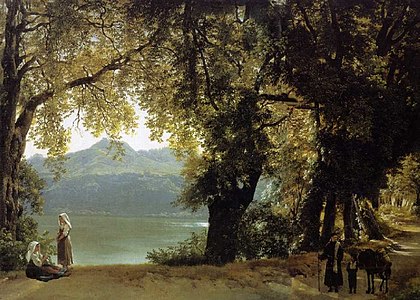
Lake of Albano (1825)
Early works show the influence of Dutch and Italian masters from the 17th century. Shchedrin’s mature works moved away from idealized landscapes to more realistic depictions.
In his paintings, he focused on the effects and atmosphere of light. At the time, this approach was revolutionary in Russian art.
En Plein Air Technique
Shchedrin is one of the first Russian painters to paint outdoors or en plein-air. He believed direct observation was the key to capturing the essence of nature.
He would often paint in real time using his easel. He could accurately portray changing weather and light conditions.
He used his plein-air sketches as studies for more elaborate studio pieces. Many of his sketches were finished works in their own right.
Shchedrin’s style of outdoor painting influenced later generations of Russian artists. It paved the way for the Impressionist movement.
Comparison with Old Masters and Russian Peers
Shchedrin greatly admired the Old Masters, but his style was very different. He moved from idealized compositions to more realistic depictions of nature.
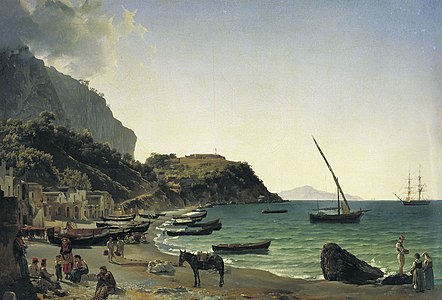
Marina Grande, Capri
Shchedrin, unlike many of his Russian contemporaries, preferred the warmer Mediterranean light to northern landscapes. His time in Italy influenced his subject matter and color palette.
He was the first to paint nocturnal scenes in Russian art. His moonlit scenes showed off his ability to capture subtle lighting effects.
Shchedrin’s art bridged the classical and modern styles. He was influential on both the academic painters of Russia and the Realist movement.
Major Themes and Recognitions
Sylvester Shchedrin specialized in Italian landscapes and coastal scenes. His work was praised and influenced many later painters.
Depictions of Sorrento and the Tyrrhenian Sea
Shchedrin painted many beautiful scenes of Sorrento, the Tyrrhenian Sea and its surrounding area. He painted the sunny terraces of the area, as well as its blue waters and rocky cliffs.
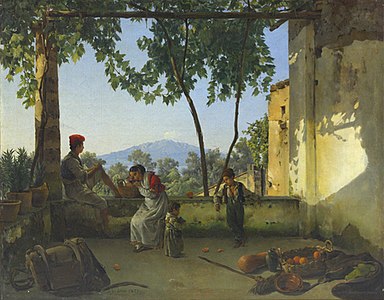
Balcony in Sorrento
The “View of Sorrento”, “Terrace on the Seashore”, and “Terrace on the Seashore”, show his mastery of light and shadow. These paintings highlight the warmth of the Italian sun and the crystal clear waters.
Shchedrin painted other Italian coastal cities like Posillipo, Capri and Posillipo. In “Midday on Capri”, Shchedrin depicts the island’s rugged landscape and sparkling sea.
Accolades and Impact on Future Generations
The Imperial Academy of Arts recognized Shchedrin for his talent and awarded him several awards. His landscapes won him both the Gold Medal as well as the Large Gold Medal.
His style was influential on many Russian artists. Shchedrin’s works can be seen in many major museums, including the Tretyakov Gallery in Moscow.
His “Terrace at Sorrento series” became extremely popular. Other artists painted similar scenes of Italian coastline life.
Frequently Asked Questions
Sylvester Shchedrin was a talented Russian landscape painter active in the early 19th century. Art lovers are still interested in his life and work.
What are the notable works of Sylvester Shchedrin that define his legacy as a painter?
His best-known paintings are Italian landscapes. His paintings of Naples and its surroundings are especially famous.
“New Rome. Castle Sant’Angelo and “View of Sorrento” are his most famous works. They show his ability to capture light and atmosphere.
In what artistic styles is Sylvester Shchedrin predominantly known to have worked?
Shchedrin’s work is primarily Romantic in style. His paintings are a combination of realism and idealized views of nature.
Landscapes are a great way to express emotion and mood. Shchedrin achieved this effect by using color and light.
How did the historical context of 19th-century Russia influence Sylvester Shchedrin’s paintings?
Shchedrin lived during a time of cultural exchange between Russia and Western Europe. This shaped his artistic development. This influenced the development of his art.
He studied at the Imperial Academy of Arts in St. Petersburg. A large part of his life was spent in Italy. The unique style of his work was a mixture of Russian and Italian influences.
Which art movements or schools is Sylvester Shchedrin associated with?
Shchedrin’s paintings are associated with the Russian Romantic movement. He was influenced in his work by classical landscapes painted by artists of the 17th century.
His work bridges the gap between academic tradition and the new Romantic aesthetic. This blend of styles made him an important figure in Russian Art at the time.
What contributions did Sylvester Shchedrin make to the development of landscape painting?
Shchedrin helped popularize plein air painting in Russia. This involves painting outdoors to capture the natural colors and light.
He also brought a fresh perspective to landscape painting. His focus on mood and atmosphere paved the way for later Romantic painters.


